We don’t often see a connection between St. John the Apostle and St. Joseph, but there are some interesting scriptural grounds to do so. “Joseph, son of David, do not be afraid to take Mary your wife into your home.”1 “Then he said to the disciple, ‘Behold, your mother.’ And from that hour the disciple took her into his home.”2 Both St. Joseph and St. John were made part of Jesus’ immediate human family by revelation. We see that the way to a family bond with Jesus is by a special relationship with the Virgin Mary. Both St. John and St. Joseph were revealed what kind of relationship they were to have with the Blessed Virgin Mary. In the case of St. John, he is told to “look at,” or to “behold,” his “mother.” The same word is used by John the Baptist to indicate the Lamb of God, “behold the Lamb.” St. Joseph is invited to “take” the Virgin Mary, his “wife.” This word for “take” also means “receive,” or “set aside for a specific purpose.” We can see that St. Joseph is called upon by the angel to “take the child and his mother,” each time he has a dream that requires him to move. This word has both an active sense and a passive sense in Greek, which means we could read, “Do not be afraid to receive Mary your wife,” in the sense that God is giving Joseph the Virgin Mary. Joseph’s response is also to “receive,” but in the active sense of “taking.”
We see St. John acting immediately upon the Words of Christ as a revelation that alters his relationship with the Virgin Mary. Just as John the Baptist’s revelation of the Lamb caused him to immediately follow Jesus, so Jesus’ revelation of Mary’s motherhood causes John to immediately take/receive her “into his own/home.” Christ calls his disciples “friends,” which makes them more than servants. Jesus would take his “friends” a step further by revealing their relationship with the Virgin Mary. Joseph, who is protector and collaborator of the Blessed Virgin by the special call of God, prepares the way for John who receives the Virgin Mary as mother.
Quotes:
“St. Chrysostom observes that God treats thus all his servants, sending them frequent trials to clear their hearts from the rust of self-love, but intermixing seasons of consolation. “Joseph,” says he, “is anxious on seeing the Virgin with child; an angel removes that fear; he rejoices at the Child’s birth, but a great fear succeeds; the furious king seeks to destroy the Child, and the whole city is in an uproar to take away His life. This is followed by another joy, the adoration of the Magi; a new sorrow then arises; he is ordered to fly into a foreign unknown country, without help or acquaintance.””3
“It is the opinion of the fathers that upon their entering Egypt, at the presence of the child Jesus, all the oracles of that superstitious country were struck dumb, and the statues of their gods trembled, and in many places fell to the ground. The fathers also attribute to this holy visit the spiritual benediction poured on that country, which made it for many ages most fruitful in Saints.”4
“We cannot doubt that he had the happiness of Jesus and Mary attending at his death, praying by him, assisting and comforting him in his last moments. Whence he is particularly invoked for the great grace of a happy death, and the spiritual presence of Jesus in that hour.”5
“Inspired by the Gospel, the Fathers of the Church from the earliest centuries stressed that just as St. Joseph took loving care of Mary and gladly dedicated himself to Jesus Christ’s upbringing,(1) he likewise watches over and protects Christ’s Mystical Body, that is, the Church, of which the Virgin Mary is the exemplar and model.”6
“How does Joseph respond to his calling to be the protector of Mary, Jesus and the Church? By being constantly attentive to God, open to the signs of God’s presence and receptive to God’s plans, and not simply to his own. […] Joseph is a “protector” because he is able to hear God’s voice and be guided by his will; and for this reason he is all the more sensitive to the persons entrusted to his safekeeping. He can look at things realistically, he is in touch with his surroundings, he can make truly wise decisions. […] Let us protect Christ in our lives, so that we can protect others, […]”7
“Looking at the gospel texts of both Matthew and Luke, one can also say that Joseph is the first to share in the faith of the Mother of God and that in doing so he supports his spouse in the faith of the divine annunciation.”8
Footnotes
- Mt. 1:20(,24).
- Jn. 19:27.
- Shea, J. G. (1887). Pictorial Lives of the Saints (p. 145). New York; Cincinnati; Chicago: Benziger Brothers.
- Shea, J. G. (1887). Pictorial Lives of the Saints (p. 145). New York; Cincinnati; Chicago: Benziger Brothers.
- Shea, J. G. (1887). Pictorial Lives of the Saints (p. 146). New York; Cincinnati; Chicago: Benziger Brothers.
- John Paul II. (1989). Redemptoris Custos. Vatican City: Libreria Editrice Vaticana.
- Francis. (2016). Mass, Imposition of the Pallium and Bestowal of the Fisherman’s Ring for the Beginning of the Petrine Ministry of the Bishop of Rome (Tuesday, 19 March 2013). In Homilies of Pope Francis, 2013–2015 (English). Vatican City: Libreria Editrice Vaticana.
- John Paul II. (1989). Redemptoris Custos. Vatican City: Libreria Editrice Vaticana.

